Between Big Sur and Monterey Peninsula lies one of my favorite places in California, Point Lobos State Natural Reserve. It is an important marine preserve and wildlife sanctuary.
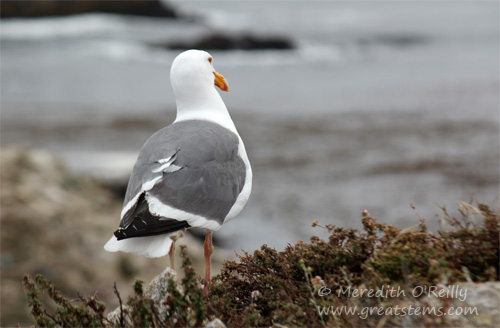
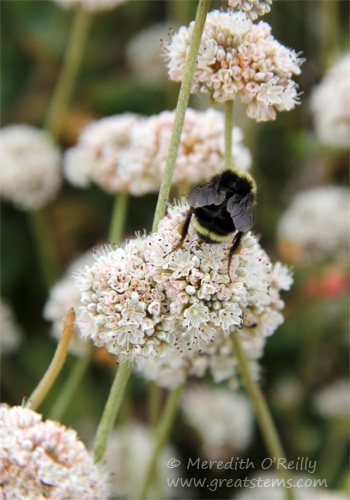
Bumblebee on Sea-cliff Buckwheat, Erigonum parvifolium
To me, it’s one of the most beautiful places on Earth, rich in wildlife and diversity.
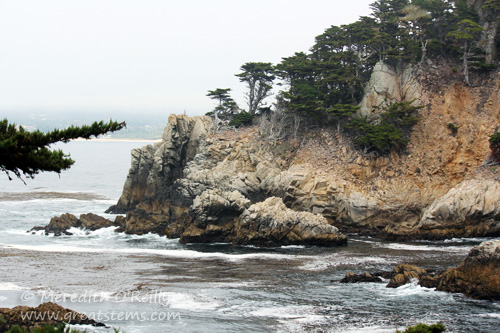
When the skies are clear, the waters are a gorgeous blue, sometimes with shades of turquoise, creating a colorful contrast to the jagged cliffs and enormous rock islands. Of course, fog, wind, and overcast skies, prevalent for the bulk of our vacation, continued for our Point Lobos stop, but it was still beautiful.
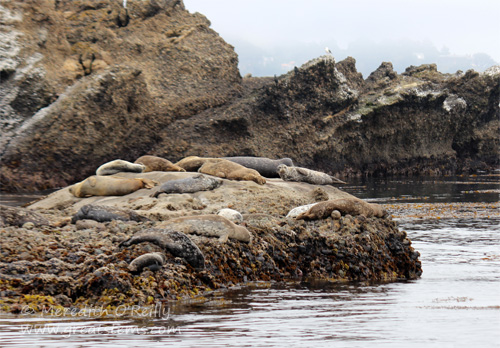
From rocky vantage points, visitors can sometimes catch glimpses of sea otters and migrating whales. A particularly popular spot is Sea Lion Point, where coves serve as warm low-tide haul-out spots for harbor seals. 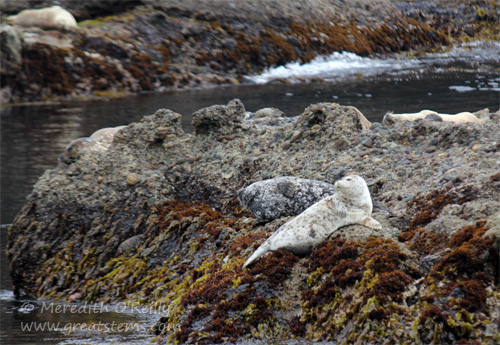
Harbor seals maneuver rather awkwardly on land. They come to these basking rocks as the water recedes at low tide. While the seals might rest for long periods of time, they are still cautious, checking regularly for signs of danger. Also, harbor seals don’t usually touch each other while they are basking on shore. This is different from sea lions, which typically cluster together for a nice cozy sleep.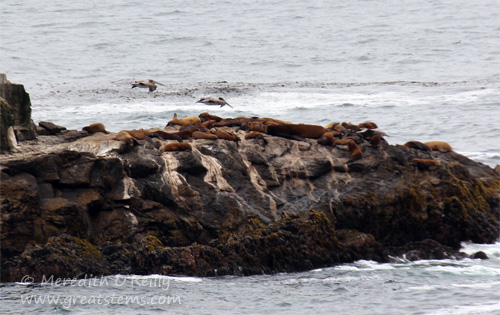
Offshore are the Sea Lion Rocks, basking spots for large groups of Stellar Sea Lions. This rock was a smaller haul-out spot — many more sea lions rested on a larger rock beyond.

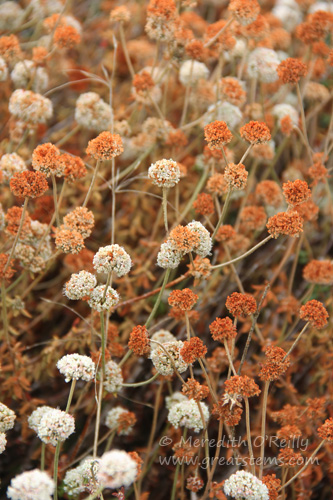
Cliff Buckwheat, Eriogonum parvifolium, endemic to California
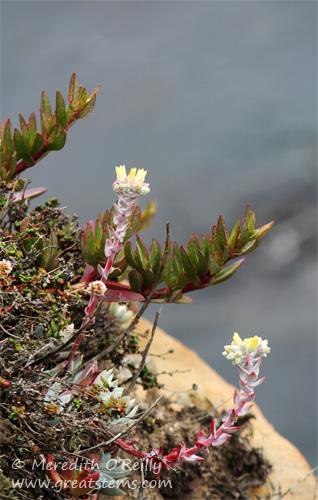
The reserve sadly is not free of difficulties from invasive plants. Coastal stone crops, for example, have to duke it out with invasive ice plants. Mustard, French Broom, and Poison Hemlock have found their way there, too. 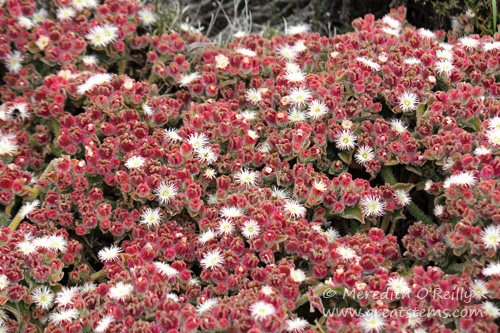
This Crystalline Ice Plant is another invasive plant, drat it. Per the California Invasive Council website, “Crystalline iceplant inhibits the growth of native plants by accumulating salt in the soil and by leaving behind mats of dry plant matter that may take several years to decompose.” What a shame that such a pretty plant is wreaking such havoc.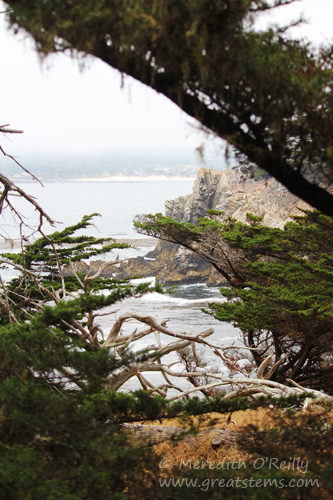
To speak instead of native plants, Point Lobos is one of only two places in the world where Monterey Cypress grows naturally. Many of these beautiful trees can be found along the Cypress Grove trail.
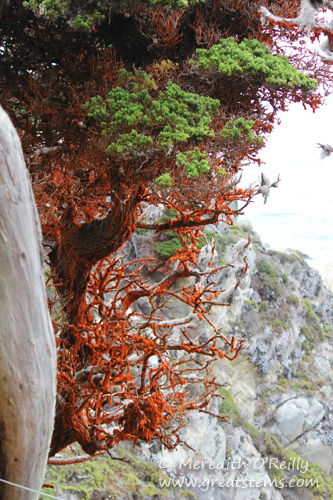
Close to the ocean, however, some of the cypress trees, as well as rocks, are covered in a velvety orange coating. This coating is actually a green algae called Trentepohlia. The algae’s chlorophyll is masked by orange carotenoid pigments, but its purpose is still the same: food production. The algae is not a parasite.
Orange Bush Monkeyflowers line many of the paths, as does the infamous Western Poison Oak.
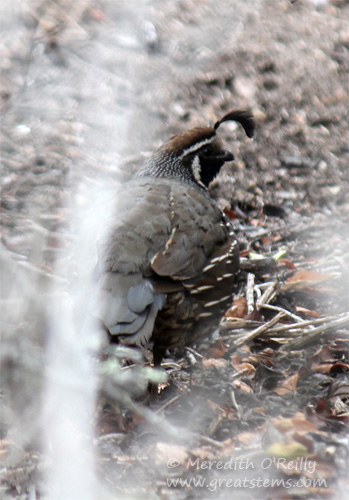
Around a curve at Cypress Grove, we spotted a group of California Quail.They quickly moved out of sight (or at least they thought they were out of sight!).
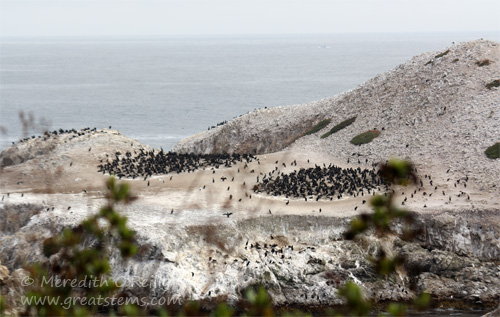 One of my favorite spots at Point Lobos is Bird Island, a summer nesting spot for large colonies of Brandt’s Cormorants and many Western Gulls.
One of my favorite spots at Point Lobos is Bird Island, a summer nesting spot for large colonies of Brandt’s Cormorants and many Western Gulls.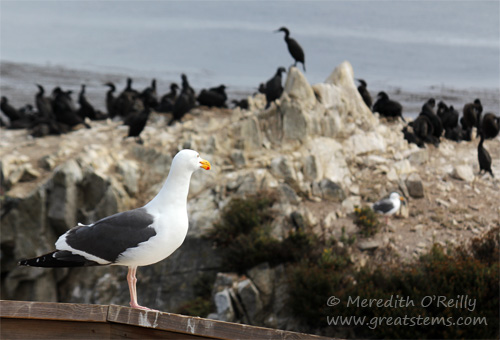
The trail leads you to a nice observation point, though sometimes Western Gulls stake their claim over it.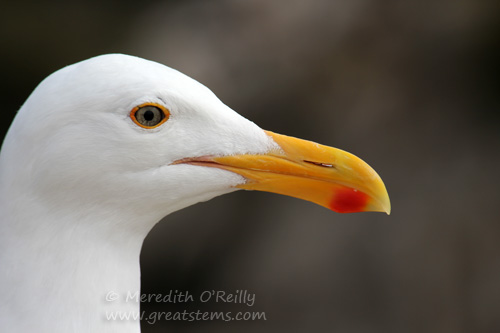
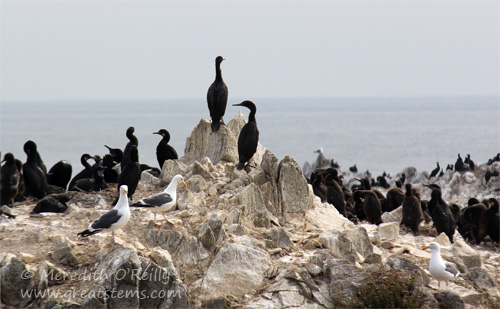
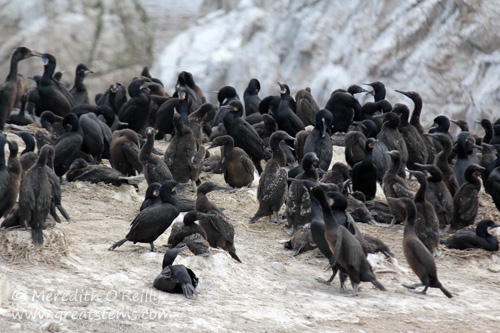 The Cormorants were in various nesting stages while we were there, but most of the juveniles were already as large as the adults. Look closely and you will see the dry circular nests many are sitting on. It’s amusing to see the large juveniles still trying to squeeze in those nests to be pampered by their parents. Also, look at the adult Cormorant in the upper left corner of the photo and you will more clearly see the blue breeding foliage that the adults have.
The Cormorants were in various nesting stages while we were there, but most of the juveniles were already as large as the adults. Look closely and you will see the dry circular nests many are sitting on. It’s amusing to see the large juveniles still trying to squeeze in those nests to be pampered by their parents. Also, look at the adult Cormorant in the upper left corner of the photo and you will more clearly see the blue breeding foliage that the adults have.
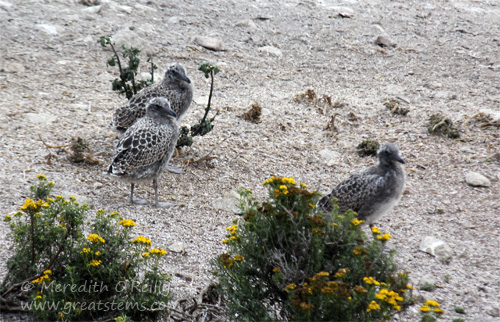 Western Gull juveniles spent time flapping and strengthening their wings, socializing, and pestering their parents for food.
Western Gull juveniles spent time flapping and strengthening their wings, socializing, and pestering their parents for food.
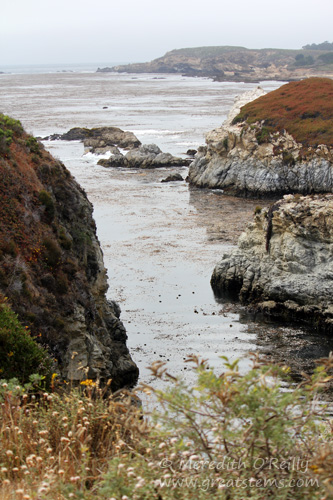
Kelp, plentiful in many of the coves and around rocky outcrops, create nutritionally-rich forests that attract sea otters and other wildlife to the waters of Point Lobos.
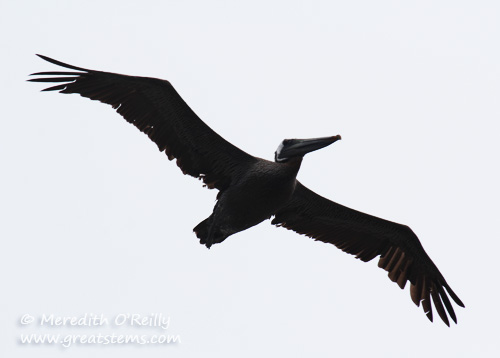
Ever were there Brown Pelicans flying along the coast.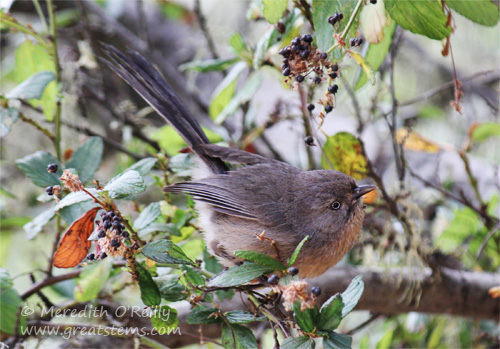 As I walked along the trail, I caught a glimpse of this small bird and managed to get a few pictures. I am undecided whether this is a Wrentit or a female Bushtit. I’m leaning toward the former, but I’d appreciate birder input.
As I walked along the trail, I caught a glimpse of this small bird and managed to get a few pictures. I am undecided whether this is a Wrentit or a female Bushtit. I’m leaning toward the former, but I’d appreciate birder input.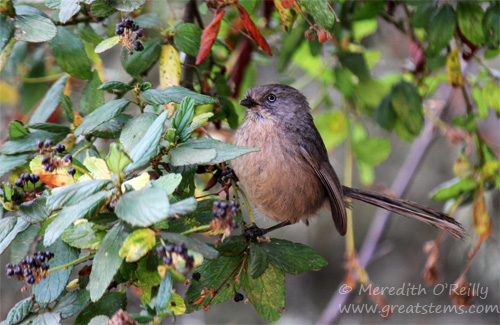
It was hanging out, often upside-down, in a dense berrying shrub and was not in a flock. It might have been eating the plentiful berries, but the shrub was loaded with insects, too. Perhaps both!
Point Lobos is one of those places that feel like home to me, much like the old-growth Redwood forests, the cool Pacific waters, the mountain air of the Rockies, and the starry skies of Big Bend. It’s a sanctuary, a haven, a “great meeting of land and sea,” and a treasure.
From Point Lobos, we headed north to Santa Cruz and San Francisco for brief visits before continuing our journey up Northern California’s beautiful coastline.
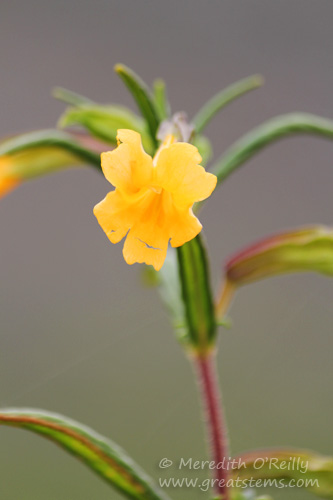
Very interesting post on one of my favorite places as well. And your pictures were outstanding. Loved the monotones and the pastel effects.
Thanks, Marilyn — it’s nice to know we share another favorite place in common!
I couldn’t agree with you more, Meredith!! Great photos and post!
Angé, thanks so much! I take it that you have been to Point Lobos?
Pingback: Pacific Journey: Santa Cruz to San Francisco | Great Stems
I haven’t edited my photos from my July visit to Point Lobos yet, so it’s fun to see what you noticed during your visit. We didn’t know about the bird nesting area. I’m sorry to have missed seeing it.
I’m looking forward to your wonderful pictures, Pam! I hope you had better luck with blue waters (less fog) during your visit! Hopefully you’ll get to visit Point Lobos again and see the bird area. In all my times there, this was the first time I’d known about it — I talked with a volunteer docent who gave me the scoop.